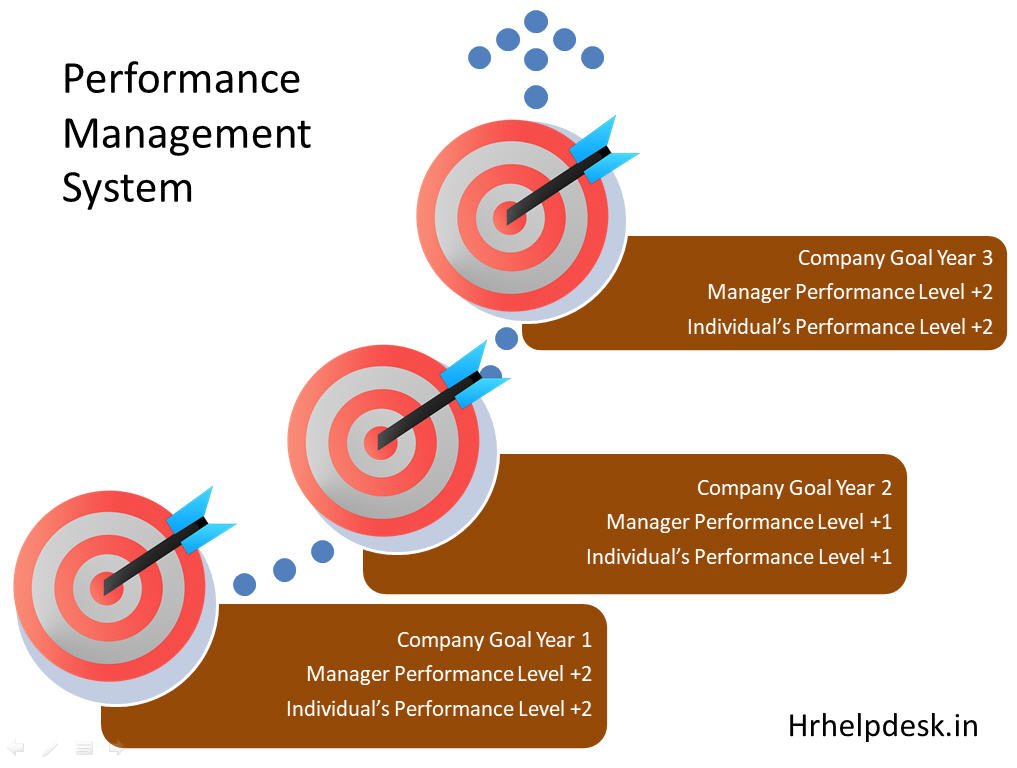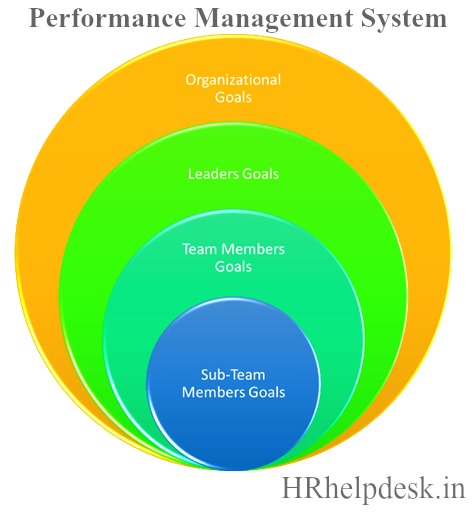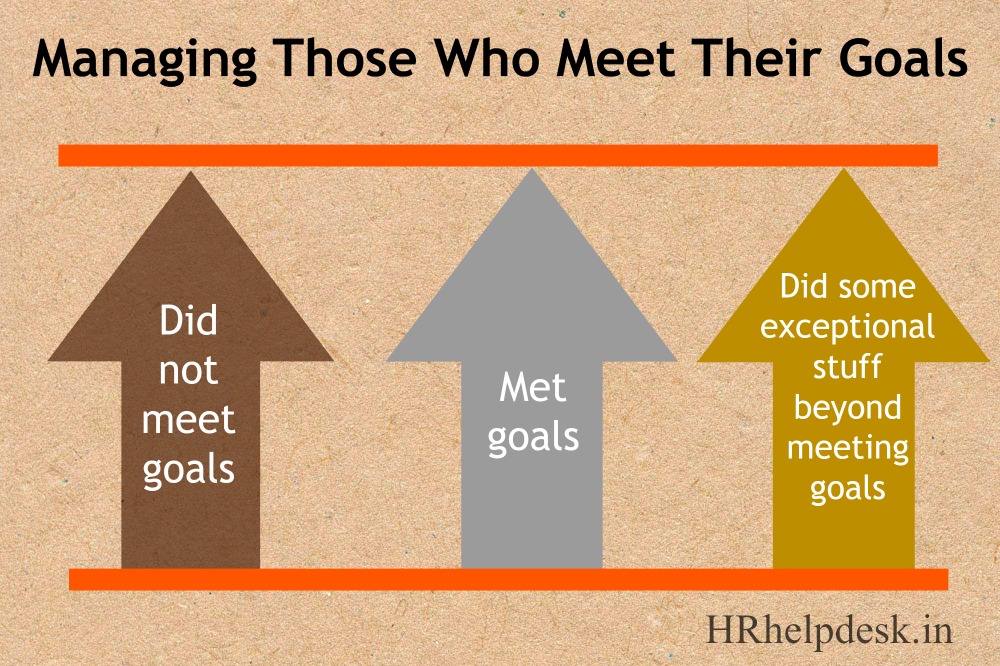Benefiting from Performance Management – The Achievement Cycle
By Mandeep Singh
Partner – Talent & Rewards, www.hrhelpdesk.in

The leader(s) of the organization, whether the CEO, board members, or anyone who is responsible for achieving the organizational goals have an intention and plan using which they want to achieve certain objectives.
The process through which this plan, this objective and this intention is broken into many smaller parts, communicated to various individual employees and used to keep track of progress is called performance management. The assumption being, that each small part will help achieve the overall organization goal as envisaged by the leadership team.
A Performance Management System therefore has 2 objectives:
- to communicate what is expected from an individual
- to act as a measurement tool for keeping track of progress being made on achieving these goals.
This is not a complex thing to do, it is simple, straight forward and a fairly transparent aspect to be monitored or executed. However, simple as it may sound, many things go into executing and implementing this as a successful activity.
Ground Rules of Performance Management
Before we start, or dwell deeper into how to have a successful Performance management system, let us have certain ground rules clarified. The salary increment, the promotion process and the performance review cycle don’t have to be necessarily timed together. The performance review activity has to be more frequent than any of the other two and should mainly be aimed at checking where the individual is on the said goals and how the gap, if any, can be reduced within the desired timeframe or resources.
It is a guiding tool, formally documented, with the aim to have a dashboard of progress. One needs to have real time or monthly reviews to gather and correct course for achieving results.
How Will a Quarter Or Annual Review Help?
To illustrate further, you don’t enter a Formula 1 race without any dials on your car or feedback from your crew in your earphones, and neither do you go through the basics required to win the race after the race is over. You do have to review the basics, but that is to better yourself for the next race, and not to win the present one.
Similarly, the employee needs to have that crystal clear vision on what is winning and how is he or she doing on every step to contribute to winning.
Companies which reduce the number of formal feedbacks are actually trying to wash their hands off and are operating in a belief that each line manager is professionally matured to manage the performance of their team. Unless culturally line managers are trained in this maturity model by the company, the companies goals are individual manager and luck dependent rather than process and employee effort dependent.
Designed to Attain Company Goals
An effective performance management system is designed to attain company goals, it is not designed for talent refresh or talent replacement. Performance Management is a business strategy, a roadmap and a blueprint to help business achieve its stated goals. It is not a people process, owned, developed and delivered by HR.

So, what role does the HR team play? The HR team trains managers to have clearly articulated goals, it helps convert organizational goals to individual goals and acts as a third party to see if the written down goals are clearly measurable.
The ownership of ensuring that the monthly reviews are happening and that the stated goals are being met, is of the line manager and the business head. The HR team member only acts as a dip stick check to see if the reviews have happened appropriately. The HR team should be more concerned about the outcome in terms of how many have met their goals and how many haven’t, rest all is managed and delivered by the business head, after all, it is their business and they own it.
The role of the line manager is to ensure that he or she has the monthly review, it could be as short as a 1 hour review, and it is to ensure that both the employee and the line manager understand where they are on achieving the goals. The outcome of these reviews is to plan ways of achieving goals and correct the course if needed, including upskilling an employee if required.
By the time the company decides to do an annual review for salary increments or promotion, there should be following calibration
- People who did not meet goals
- People who met the goals
In a way, I am saying do away with the 5 point or 4 point rating scale, relative performance rating and the forced bell curve.
How Do We Manage Employees Who Have Not Met Goals
Meeting goals is as much a responsibility of the manager as of the employee, a manager who has people in his or her team is having some issues managing the team and should be trained on how to get work done. The employees who are not able to achieve the goals should be trained or put in different roles. Ideally monthly or quarterly goals review should have highlighted that goals are likely to be missed and corrective training or redeployment should have taken place by the time annual review happens.
What I am saying is, that performance is achievement based and no single individual can be declared as a failure in it or be penalized for it. After all, the company took a decision that the person can perform the task. Now the employee can’t be punished for failing to live up to their expectations. The people who took the decision to put the person in this role and the immediate manager also have an equal responsibility in the success and failure of this employee.
So, exits or penalty as a result of performance don’t happen. Penalty if any should be given for attitude, behavior, discipline, knowledge and not for performance. An individual’s performance is the responsibility of the employee and the manager. I know this can be seen as a socialist approach, which I am not suggesting. All I am saying is, performance is never an individual outcome, the responsibility of the company is to ensure systems are developed and environment is created to ensure expected performance.
You do, however have redundancies and retrenchments, if an individual has been assigned a role as a result of being hired or promoted or internal movement, and for some reasons the individual and the manager are not able to deliver results, then the individual may be shifted, there is a possibility that the company doesn’t have a role which suits their ability, in such cases, redundancies and retrenchments should be done.
Managing Those Who Meet Their Goals
Those who have met their goals should be differentiated for the rewards given to them by way of salary, promotion, secondmants, projects, or bonus.

Which means we should have differentiation basis performance and that is the reason we have the 3 point rating scale rather than the conventional 4 point or 5 point rating scale.
Which is Gold, Silver and Bronze.
People in the 3rd category (Gold) should be differentiated for rewards
The important question that arises then is whether the bell curve is needed and how does company move ahead. No, bell curve should not be followed, as long as an individual meets their goals, they get rewarded. The company grows by giving goals which keep going up year on year for the entire company and not the individual.
Inclusive System of Growth
Hiring and promotions are calibrated to ensure that individuals who can meet the new level of delivery are hired and promoted to those levels. Which means a person capable of delivering at level A may be at a particular people manager position, however, next year the company will have people who can deliver A+2 at the same level, and only those who can deliver are promoted to this level, so is hiring done at this level. Existing workforce is trained to deliver at that level.

This however has a caveat, that the company invests in skill building of its employees at the same pace at which it intends to grow.
The advantage of this system is that, this is an inclusive system, which means everyone grows and so does the company, it doesn’t go on the belief that we move forward and those who don’t, get weeded out.
As employees, everyone wants to excel in life and this system is developed on that belief, that, we as humans are achievement oriented and if given proper support and opportunity we will accomplish what we started to achieve and keep taking the bar higher together by continuously challenging ourselves and always trying to better ourselves.
After all, that is how the human race has evolved, on knowing that a group (company) stands for each other and we move from one step to another, together.

Go ahead and build the achievement cycle. Everyone likes to achieve something & challenge themselves to achieve greater next time. This way we build a company that lasts time.
The main principle we are trying to build as a result of this Performance management system is that punishments doesn’t build performance, but differentiated rewards do.
More to read
How to Choose the Right Company to Join
Employee Training & Development Program: A Need Not Privilege
Get Your Hiring Right – The Interview Circle
